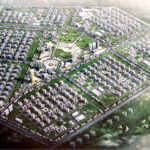Ensuring Structural Integrity: Modern Approaches to Structural Design
Outline
Introduction
Structural design is a critical aspect of architecture and engineering, ensuring that buildings and other structures are safe, durable, and capable of withstanding various forces. With the advancement of technology and materials, modern structural design approaches have evolved to meet the increasing demands for safety, sustainability, and performance. This article explores these modern approaches and how they contribute to the structural integrity of buildings.
Overview of Structural Design
Structural design involves the analysis and planning of structures to ensure they can safely carry the loads and stresses they will encounter throughout their lifespan. This includes the design of foundations, beams, columns, and other structural elements that work together to support the building. Modern structural design incorporates advanced materials, technologies, and methodologies to enhance the performance and safety of structures.
Modern Approaches to Structural Design
Performance-Based Design
Performance-based design is an approach that focuses on designing structures to meet specific performance criteria, such as safety, functionality, and durability, rather than adhering to prescriptive building codes. This approach allows for more innovative and flexible design solutions, enabling engineers to optimize structures for their intended use and environmental conditions.
Seismic Resilience and Earthquake Engineering
Seismic resilience is a key consideration in modern structural design, particularly in earthquake-prone regions. Earthquake engineering involves designing structures that can withstand seismic forces, minimizing damage and ensuring the safety of occupants. Techniques such as base isolation, energy dissipation devices, and reinforced concrete are commonly used to enhance seismic resilience.
Use of Advanced Materials in Structural Design
The use of advanced materials, such as high-performance concrete, fiber-reinforced polymers, and smart materials, is revolutionizing structural design. These materials offer superior strength, durability, and adaptability, allowing engineers to create more resilient and efficient structures. Advanced materials also contribute to sustainability by reducing the need for frequent repairs and maintenance.
Benefits of Modern Structural Design Approaches
Modern structural design approaches offer numerous benefits, including enhanced safety, improved building performance, and greater design flexibility. By adopting performance-based design, seismic resilience techniques, and advanced materials, engineers can create structures that are better equipped to handle the demands of modern construction and environmental challenges.
Best Practices for Structural Design
To achieve optimal results, it is essential to follow best practices in structural design, such as conducting thorough site analysis, using advanced modeling tools, and collaborating closely with other disciplines. These practices ensure that structures are designed to meet the highest standards of safety, durability, and performance.
Expert Insights
Structural engineers at CCG emphasize the importance of continuous learning and staying updated with the latest advancements in materials and design techniques. By staying informed and embracing innovation, engineers can deliver structural solutions that are both cutting-edge and reliable, ensuring the safety and longevity of buildings.
Conclusion
Modern approaches to structural design are transforming the way buildings are designed and constructed, offering new possibilities for safety, performance, and sustainability. By incorporating advanced materials, performance-based design, and seismic resilience techniques, engineers can ensure that structures meet the highest standards of integrity and durability. Contact our team at CCG to learn more about how we can help you implement these modern structural design approaches in your next project.
Frequently Asked Questions
Performance-based design in structural engineering focuses on designing structures to meet specific performance criteria, such as safety, functionality, and durability, rather than strictly following prescriptive building codes. This approach allows for more innovative and flexible design solutions.
Seismic resilience improves building safety by incorporating design techniques and materials that enable structures to withstand seismic forces. This reduces the risk of damage and ensures the safety of occupants during an earthquake.
Advanced materials, such as high-performance concrete and fiber-reinforced polymers, offer superior strength, durability, and adaptability. They enhance the resilience and efficiency of structures, contributing to longer lifespans and reduced maintenance needs.
Get in Touch
If you're looking to implement modern structural design approaches in your project, get in touch with us today. Our team at CCG is ready to help you achieve structural integrity and performance in your building projects.













